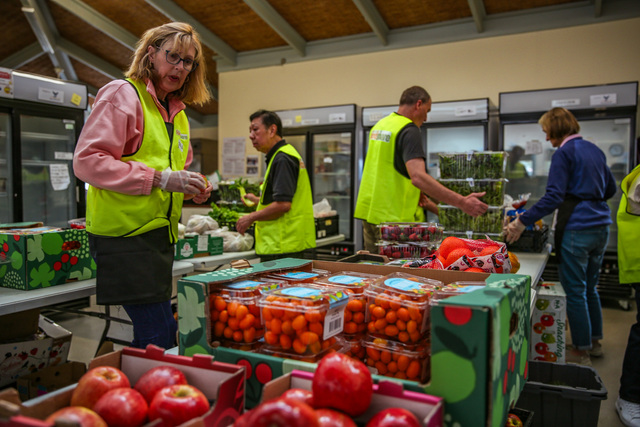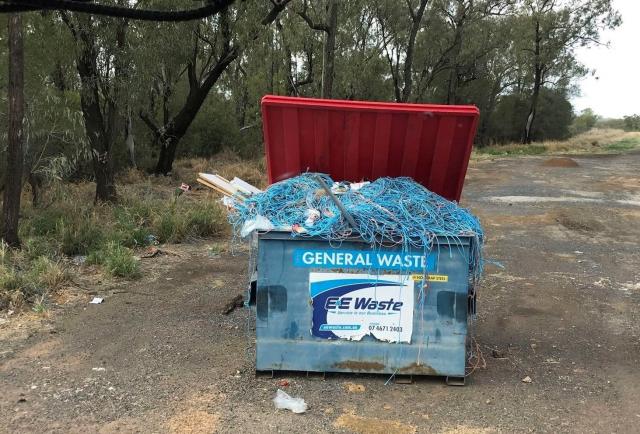Food insecurity remains firmly in the spotlight across the Yarra Ranges as demand for food relief continues and the continued strain is impacting how people are feeding their families.
Volunteers are seeing food fly out of pantries as soon as it lands in them and have noticed different groups of people accessing services that have never needed them before.
Foodbank Victoria Chief Commercial Officer Katie Fisher said when a person is hungry and their kids are hungry, they want to fill their tummies that day.
“Retailers referred to it as a beige spike,” she said.
“It’s what they see in terms of spikes in demand when there’s issues like this cost of living,” she said.
Ms Fisher said consumers were dropping costlier fresh food items like protein and dairy off their regular shops in favour of lower-cost items like chips and pizzas.
“Cost of living is impacting on the decisions that we’re making around what we’re feeding our families,” said Ms Fisher.
This year’s Foodbank Hunger Report for 2024 by Foodbank Victoria confirmed that food insecurity in Australia has reached a critical point. Almost half of low-income households have faced food insecurity in 2024, the worst the situation has been since the cost-of-living crisis began.
Compared to the average population experiencing food insecurity in 2024, those experiencing it for the first time this year were more likely to be young, aged 18-24, fulltime students, people earning higher incomes (over $95,000) and those impacted by natural disasters.
Family and friends serve as informal support to people doing it tough and in the past 12 months, the proportion of Australian households experiencing food insecurity that have received informal food relief has decreased significantly from 32 per cent in 2023 to 25 per cent in 2024.
This suggests that the role of food relief organisations has grown even more essential.
Outer East Foodshare Secretary Marilyn Lambert said they’re noticing a lot more people are seeking food relief and people who are coming for the first time, who’ve never sought food relief before.
“The crunchy thing is, they’re just managing to pay the mortgage or the rent, and they’re just keeping ahead, and then something happens, the fridge breaks down and has to be replaced, or something else, like major car repairs,” she said.
According to Foodbank, the cost of living continues to be the main contributor to food insecurity, with 82 per cent of food-insecure households citing high or increased living expenses as a factor.
Australian households are managing this cost-of-living situation by saving on everyday essentials, planning meals ahead, and reducing spending on eating out.
Serving the community from East Warburton to Mooroolbark, Love in the Name of Christ (LinC) Fresh Food Coordinator and Treasurer Mark Knoll in the Yarra Valley said there has been a huge uplift in demand in his time at LinC.
“People are now needing more – especially in the last two months,” he said.
Service demand for LincC has gone up significantly and Mr Knoll said his numbers for this year have increased since July 2023 from just over 100 to averaging around now 180 a week.
Both Ms Lambert and Mr Knoll have also noticed the ‘beige spike’ influenced by the increased strain that people are under.
“Things are not working out for them, and that makes things worse – people can become anxious,” said Ms Lambert.
Ms Lambert said using leftovers to reduce waste and trying to purchase healthier items can save people money.
“It’s amazing the number of kilos that are wasted by households each week,” she said.
Mr Knoll said at LinC they also guide clients to not just take the basics that they’re used to, like pumpkin, potatoes and carrots.
“We try to encourage them to use some of the other newer vegetables, and teach them how to how to use bok choy and stuff that they don’t normally buy.”
Mr Knoll said he has noticed a gap in service emerge for preschool-aged kids and postpartum families.
“It’s becoming a huge issue in the community, with local kindergartens coming to get food so they can give it to the parents, as they pick up their children,” he said.
“They tell me that 20 per cent of the children go to kindergarten without breakfast or any food supplies.”
Mr Knoll said he has also noticed a vulnerability for parents who are in the first throes of having children.
“They start a family, and it’s all right for about the first 16 weeks because they’re on maternity leave. But once that maternity leave drops the infant welfare centre nurses start referring them to me to help them with food,” he said.
“That’s driving a new class of working poor – most people I talk to don’t realize that, but I see it on the ground.”
Yarra Ranges Emergency Relief Network (YRERN) Project Coordinator Fiona Regan said some agencies are struggling to source sufficient food, as they’re seeing such an increase in demand.
“Many have arrangements with local supermarkets, and now find they need to collect food more regularly in order to stock their food pantries,” she said.
“Any extra work like that of course means more need for volunteers.”
“Agencies assisting people with food relief are also seeing increases in the number of people in insecure housing – either homeless, couch surfing or in inadequate housing and people needing referral for financial and housing assistance.”
A positive outcome seen by Foodbank is the significant increase in awareness of food relief itself.
“There’s a positive lens to that around it’s becoming more acceptable, more mainstream, and there’s an awareness piece of that,” said Ms Fisher.
“The challenge there is you’ve got a whole lot more people needing support from a food relief perspective, and so the demand on charities and food relief agencies,” she said.
Ms Lambert said another positive note is the diversion of food from landfill.
“It’s not just about donated food – you’re actually helping the environment by taking rescue food,” she said.
Mr Knoll said for organizations like LinC, fresh food is the low-cost option.
“LinC runs 100 per cent on volunteers – so there’s no labour cost. The food costs nothing,” he said.
Ms Regan said agencies would love to have more funding to be able to access items such as meat and dairy, particularly those who are running community meals.
“Our most recent survey of agencies say 90 per cent report an increase in demand, over half reported the need for more volunteers and more fresh food; 75 per cent said they need more funding.”
Heading into Christmas and New Year, Ms Fisher said Christmas is expensive, and that the supply chain into the food relief sector is pretty compromised over he holiday period with fewer volunteers available.
At Outer East Foodshare Ms Lambert said they will be providing several ‘pop up’ food access points across the Yarra Ranges, Knox and Maroondah.
“Come January, that’ll have gone and the traditional agencies won’t be open, so that’s where these pop-up markets will fill a big gap,” she said.
“We really would love some new volunteers to put their hands up to help with those markets.”
Mr Knoll said his Yarra Junction location doesn’t close over Christmas, but the other locations will.
“Once January starts, that’s when you see the uplift in demand, because the first couple of weeks of January, and then all the bills for Christmas start hitting that they put on their credit cards, and then that doesn’t finish, and then the school fees start,” he said.
The Foodbank hunger report stated that 47 per cent of Australians know where to get support if they can’t afford enough food, compared to 34 per cent in 2023.
However, the proportion of food-insecure households accessing formal food relief remained relatively steady from 2023, with fear of social stigma being the main barrier.
Food relief providers continue to encourage people to come forward, use the services, get financial help and and connect over community meal services.
“Reach out. You’re not alone. There are so many other people out there, and you can get food,” said Ms Lambert.
“We have something that we can’t ignore – because there’s enough food in Victoria and there’s enough food in Australia to feed every person healthy food,” Ms Fisher said.
“Food is a basic right,” she said.








